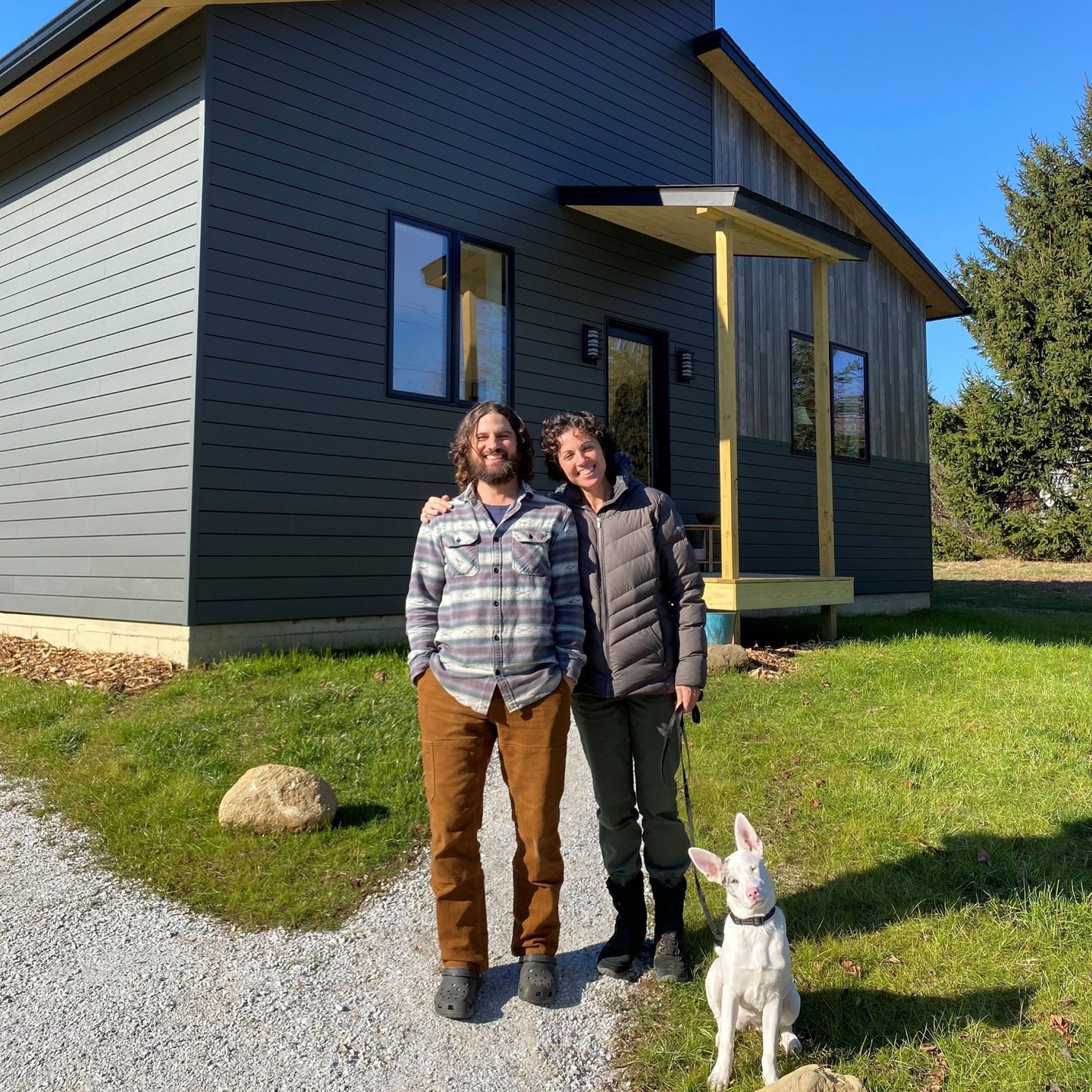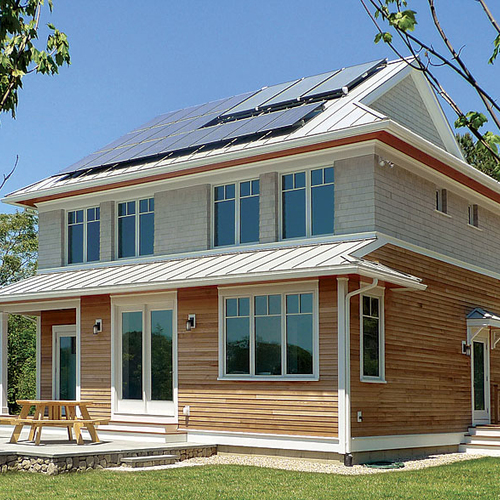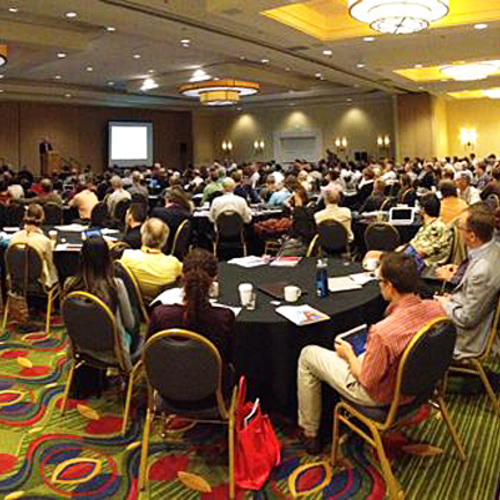
The office of Birdsmouth Design Build is located in a renovated, 850-square-foot Pullman rail car in downtown Portland, Or. This wasn’t always the case, but at a point when the company was growing and they needed a new office space, they faced a common situation for businesses in thriving urban areas, “Everywhere we wanted to be was too expensive, and everything we could afford was too far away,” said Birdsmouth CEO Josh Salinger, whose wife found the train car on Craigslist.
Today, Josh speculates that their unique office is part of the company’s appeal, at least for some of their clients. For others, it is clearly their reputation as one of Portland’s top high-performance home builders.
Josh started Birdsmouth in 2008 with designer Ben Valentin. Birdsmouth has had as many as 24 employees, but like many builders, at that size they had to make a decision: they could try to keep growing and support their overhead, or they could scale back and focus on what they love to do, which is design and build, and prioritize what’s important to them, which is designing and building efficient, healthy, and environmentally responsible homes.
Today, Birdsmouth is finding its sweet spot with around 12-14 employees including an office manager, a small design team, a project manager, two site managers, and a small crew of carpenters. The company’s two build teams handle from four to eight projects at any given time. To manage workflow and keep important and appropriate tasks in-house, they sub out specialty skills including roofing, insulation, drywall, and most of the mechanical work. Birdsmouth carpenters handle all things wood including framing and finish carpentry. They also handle everything having to do with water, air, and moisture control.
“It’s so important to these buildings to get the air barrier…
Weekly Newsletter
Get building science and energy efficiency advice, plus special offers, in your inbox.

This article is only available to GBA Prime Members
Sign up for a free trial and get instant access to this article as well as GBA’s complete library of premium articles and construction details.
Start Free TrialAlready a member? Log in















17 Comments
This is just beautiful. It's frustrating that most standards seem to work against smaller homes, or at least make it easier on big ones.
The mechanicals are just what I have thought of trying on an up coming build, but in my climate I'd like to use a wet coil off of Sanden's biggest tank to boost the Minotair instead of a toaster. I'll probably need more than ten days of help, though I haven't run any numbers yet, I believe it's possible. Anyone have thoughts on that.
Keep up the good work Birdsmouth.
HI Andy,
You'll be glad to know Minotair is releasing a water to air post-heating coil later this month.
Stay tuned!
Kewl!
Excellent. I had a feeling I wasn't alone in my thoughts, especially after reading this article.
I have 2 projects where we have used the Minotair/Sanden combined with the SunBandit PV solar as the buffer tank.
One is in Kotzebue, Alaska. It was conceived to grow hydroponic food in the Arctic, for food security. As a prototype, we reconditioned a 26' refrigerated trailer with 4" EPS foam and radiant wall and floor panels. The 3 products keep the trailer at the set 73F year round. The Solar PV creates heat from March thru October. The Sanden helps when there is not enough sun, and down to -20F. (I have been in the Van in february, when the Sanden and Minotair have turned on at -35F).
In extreme cold weather, the backup grid tied element in the SunBandit tank creates enough heat that the Minotair can keep raise the temperature to the 73F set point of the system.
See the project here: http://www.tcohllc.com/projects.html
The other is a Habitat for Humanity project done by my colleague Cillian Barrett of Hearth DesignBuild. He designed a PH capable .33 ACH50 home of 1000sf. We did the same thing here except we are using the new in-line coil from Minotair. Alex told me the first unit produced should be there any day now. The Sanden was not installed last fall before the minus temperatures kick in, so they are waiting until it gets warmer in the next month or so. The SunBandit tank has been running on the Grid tie element all winter. The Minotair has been keeping up all winter by using the ASHP to boost the 1kw electric baseboard up to keep the home at 65F even at -35F! We know that once this system gets the coil and Sanden, it will be a prefect system.
Cillian told me the January electric bill was $70. He said the home is performing better than he expected. We are hoping the addition of solar and the Sanden and coil will get this home to Net Zero for the upcoming year.
I have been working with Sanden, SunBandit and Minotair for 4 years now and I'm extremely happy with all 3 products, especially in remote areas. They are all durable products and are holding up to the elements. I encouraged all 3 manufacturers to get to know each other and Alex and Karl met with John Miles a few years ago to collaborate on the coil. Dave from SunBandit has been providing Flat plate HX pumps that will move the water from the SunBandit to the duct coil and back. We are beginning discussions to offer the system as a complete package. Please feel free to contact any of us for more information.
Mark D. Houston
The Comforts Of Home, LLC
Anchorage, AK
907-244-4250
[email protected]
Founding Board member of Alaska Association of Energy Professionals. (AAEP)
Vice President of Alaska Center for Appropriate Technology. (ACAT)
1st Alaska PHIUS Certified Rater (PassiveHouse Institute US)
Adjunct-UAA Construction Management Program
Instructor at ACHP (Alaska Craftsman Home Program)
Alaska distributor for ALL products available through https://foursevenfive.com. Including Lunos Ventilators and Mento and Intello, Air Barrier Systems and ProClima Tapes.
Fenstur - Passive House, North American made windows and doors from Vancouver Island, built to European standards.
Zola European Arctic quad pane Windows
Sun Bandit PV solar hot water
Sanden CO2 Air Source Heat Pump Hot Water.
Minotair - PENTACARE-V12, Multi-functional ventilator
All 3 can be combined to provide solar assisted Net Zero heat/Ventilation and hot water for Net Zero buildings.
Please visit http://WWW.TCOHLLC.COM for more about these highly effective products.
>"The increased R-value allowed them to use 3 inches of exterior insulation instead of 4 inches and save money on rainscreen furring fasteners. “If we had used 4 inches of regular EPS,” said Josh, “We would have needed to go to a longer and stronger fastener to install the rain screen battens, driving up costs in a significant way.” Three inches of GPS, with a slightly higher R-value and less expensive fasteners saved money overall."
Compressibility issues aside, given the total amount of the graphite loaded EPS used in that project, going 25-35% fatter with RECLAIMED Type-VIII roofing EPS would have been a lot greener and cheaper too despite the upcharge on fasteners, since the cost of the foam would drop by ~75% (or more.) Going with 3" of reclaimed roofing polyiso for the wall foam wouldn't impact the fasterner cost AT ALL, and would hit the same or higher performance.
The greenest foam insulation BY FAR is reclaimed foam, since it's essentially carbon (and other pollutant) neutral. It's the only foam that's remotely in line with cellulose fiber. All virgin stock foam has an immediate and substantial environmental impact:
https://materialspalette.org/wp-content/uploads/2018/08/CSMP-Insulation_090919-01.png
Dana, any recommendations on where to source recycled insulation? Google doesn't yield much. Should I be looking for dedicated recycled construction material businesses?
Craigslist.
Nice project!
I think the builder's preference for stick-framed roofs probably comes from familiarity. For crews here who almost exclusively use trusses, assembling them would be a one day job for two guys.
Great article. Just when I think I've finished tweaking the design, an article like this comes along. Looks like it's worth taking another look at the Mintoair unit. The article echos the experience I've had with energy modelling our small build-at 980sq ft, passive or near passive standards just aren't worth chasing and aren't good measures.
Was is a regular sill seal that was used or the EDPM type?
Thanks for the kind words, sorry if this incited another re-design!
The sill seal is just the regular stuff, not the EDPM. We had the 6 mil vapor barrier go over the top of the stem wall, then used sill seal as a redundancy as we really didn't want to wick moisture with the edge of the zip panels. This wasn't an air barrier detail- that was taken care of with the Siga Fentrim from the bottom of the zip panel to the foundation on the exterior.
It's great to see common sense approaches to passive house and not just machine gunning every high performance product available.
Having installed the Minotair units, are there any unique installation requirements or would it be straightforward for an installer who is capable but has no experience with the unit before?
The install on the Minotair is remarkably straightforward. If your HVAC trade partner can run ductwork, that is about it. It comes pre-charged so there is no need to charge in situ. I very highly recommend running a manual D to get the duct sizing correct, and also definitely use the sound absorbing flex ducts for the last 3' or so of the duct runs (contact Minotair and they can send these with the unit). It balances well and the controls are really intuitive.
Joshua, a couple more questions.
Which variety of Fentrim did you use for the high wear areas?
Did your duct design end up different from the Minotair installation guidelines?
Great home, well done. I am curious about make up air, what did you do about this considering how tight the home is? I am assuming your bathrooms are all on the Mintoair system with boost in bathrooms? Range hoodfan is recirculating charcoal filter? Condensing clothes dryer? No wood stove? Cheers
Thanks!
There are booster switches in the bathrooms and the kitchen. We used a recirc hood vent in the kitchen as the local code official allowed us to use the Minotair boost at 250cfm to meet ventilation requirements and the clients aren't huge cooks. We have since stopped using recirc fans in our kitchens and do a pressure activated damper for makeup air that provides the air to the cabinet toe kicks to either side of the range. We take the leakage penalty here as the dampers only do so good (especially during pressurization testing), but we are still regularly hitting sub PH levels of airtightness. We used a condensing dryer and no wood stove- this would have baked them out of the house!
Thanks for the details Josh! Do you condition the make up air at all or is that not required in your climate zone? We are in zone 6 and we need to condition make up air to be comfortable. Curious which brand condensing dryer you are using, we have had troubles with some brands working effectively. Cheers!
Log in or become a member to post a comment.
Sign up Log in